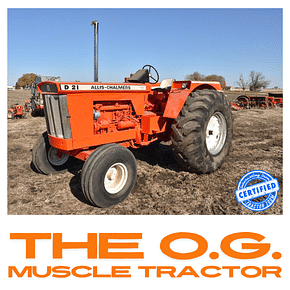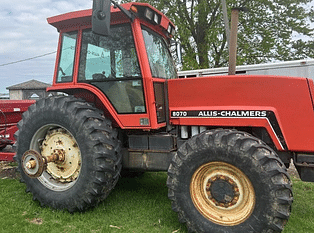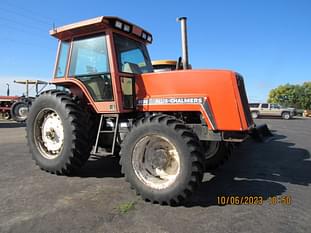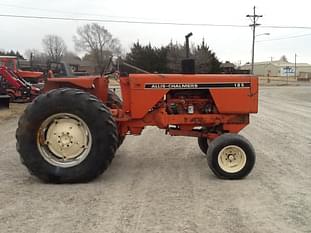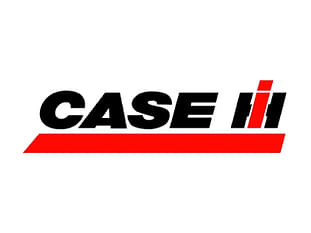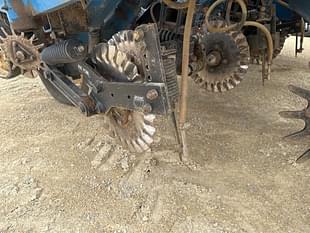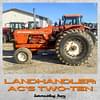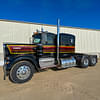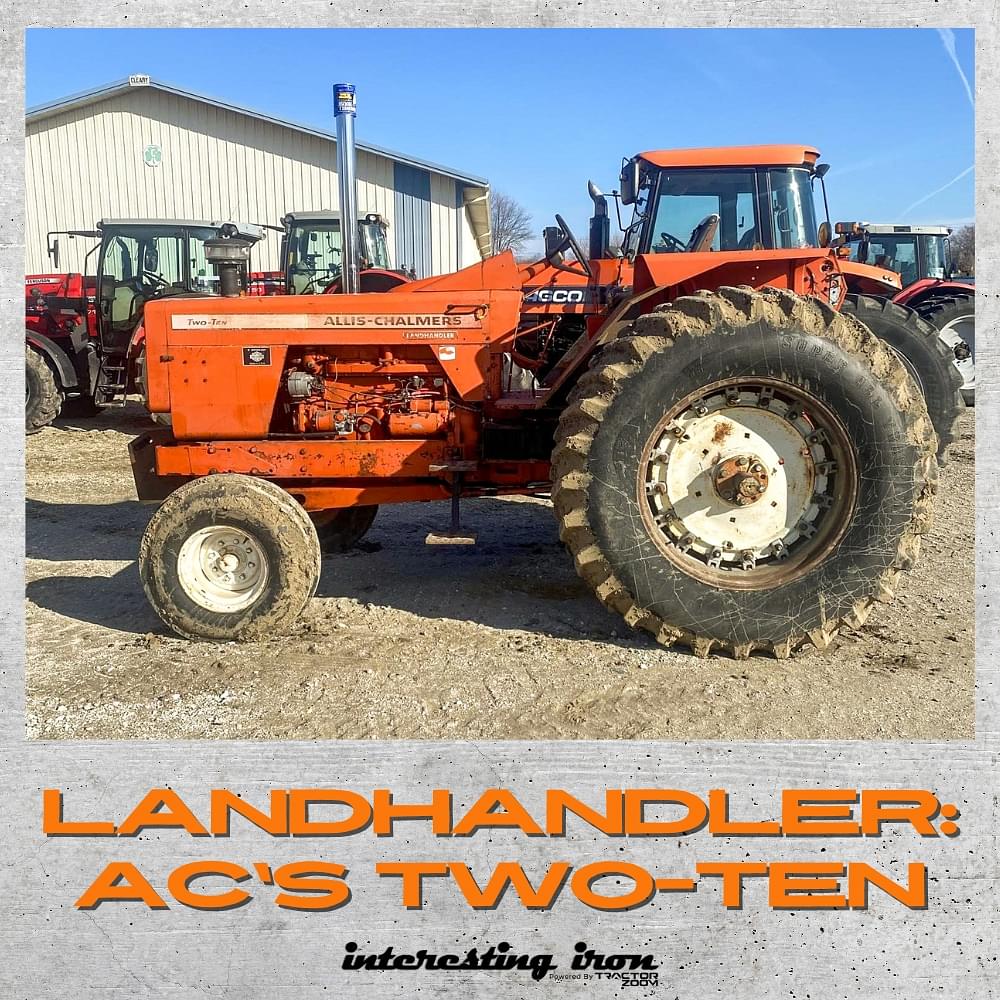
INTERESTING IRON
Allis Chalmers 210: The Landhandler
Ryan Roossinck
April 25, 2024

I stumbled on this Allis Chalmers 210 (or Two-Ten, if you’re a purist) on TZ the other day and I got to thinkin’, “Man, it’s been a minute since I’ve written about anything orange…”
So here we are!
We’ve got a number of Allis Chalmers tractors for sale right now, but only one 210. I’ve always thought they were kind of an interesting tractor, so let’s take a little deeper dive into these machines.
This tractor is on consignment at A.C. McCartney’s Wataga, IL location.
You can’t really classify the Allis Chalmers 210 as an oddball, but there are some oddities about it. It almost comes off as an afterthought in some respects. It looked really good on paper, but in the real world, they didn’t sell all that well. Furthermore, in the A-C’s grand scheme of things, did it really matter?
Seriously…what’s this tractor’s deal?
To answer that, I think you have to look back to the early sixties, and the transition from the D-Series tractors (specifically the D-21) to the Hundred Series.
The Allis Chalmers “D-Series”
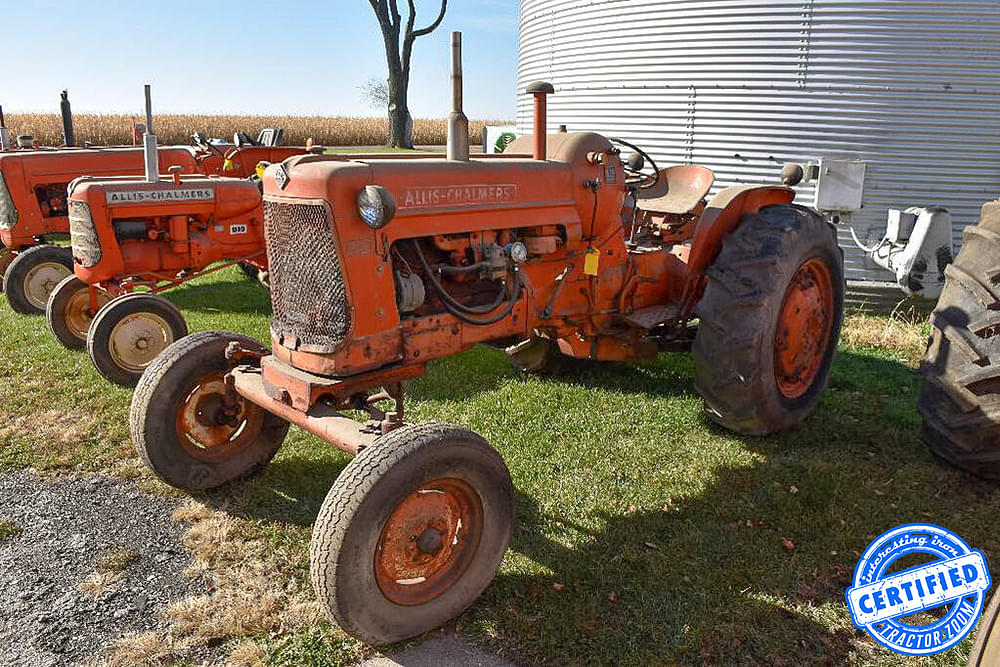
Allis Chalmers rolled out the D-Series in 1957 with the D-14 and D-17, and followed them up with five more models over the next six years. They ranged in horsepower from 31 on the low end up through the mighty D21 that cranked out 119. For the most part, they were all fairly competent machines, and Allis sold a lot of ’em. None really led their categories as far as I’m aware, but they were all right there in the mix with IH, Deere, Oliver, Moline, and Ford.
The D-21
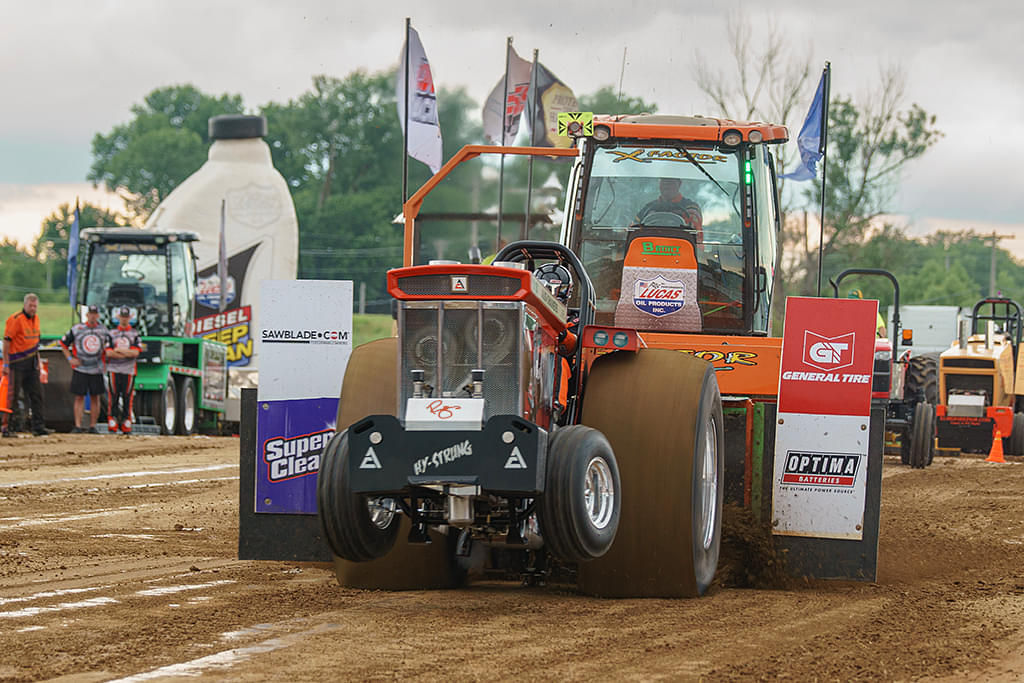
The D-21 was the big horse, and it was a monster. It made big waves with fresh, modern styling and there was no getting around the big 426 cubic inch engine and the power it made. The Series I tractor made about 103 horse at the PTO, which made it the most powerful row crop Allis had ever built. Furthermore, they turned up the wick for 1965 by adding a turbocharger, which was good for about 25 more horse. (There’s a story behind this; read it here. The O.G. Muscle Tractor)
The Allis Chalmers “Hundred Series”
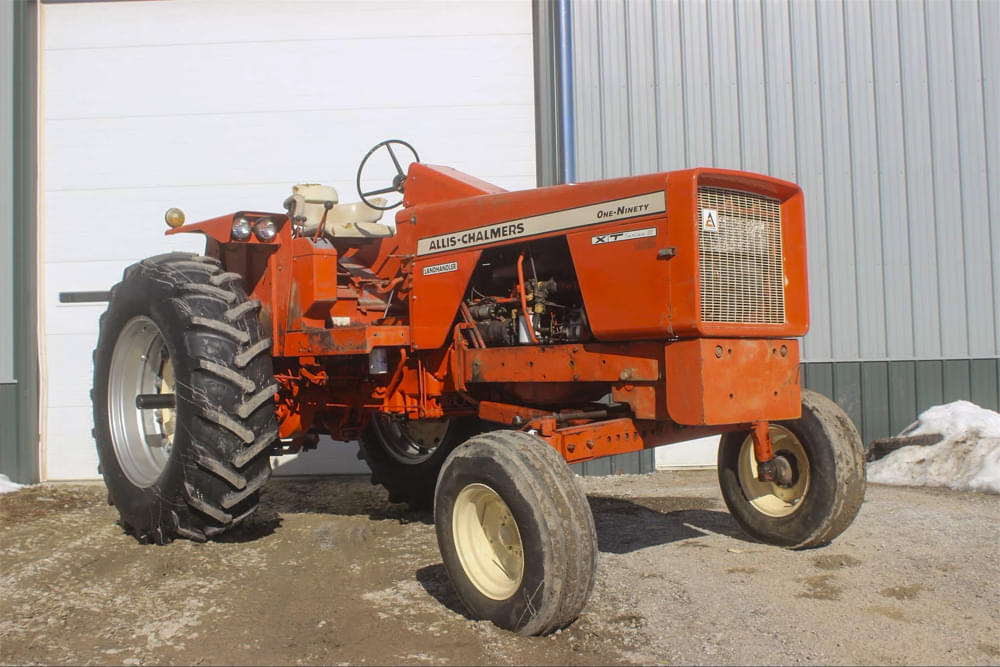
Most of the D-Series tractors were in production for 8-10 years. Their replacements were the known as the “Hundred Series” machines, and Allis began trotting them out starting in 1964 with the 190 and 190XT.
A-C’s Hundred Series tractors had a much more modern look to them. With the new styling came new capabilities, too. They were pretty well-built, and just about every tractor that came equipped with the Allis 301 cubic inch engine was known to be pretty darn reliable. Those engines were properly stout!
Overall, they were good tractors, albeit a little quirky. Many models didn’t have a true live PTO, and the transmissions had a weak spot or two (especially if they’d been run hard, which they often were). Still, the tractors sold reasonably well – especially the 190XT.
Eventually, the D-21 needed to be replaced as well…which is where the 210 comes in (somewhat indirectly).
Landhandlers: Replacing the Big D…
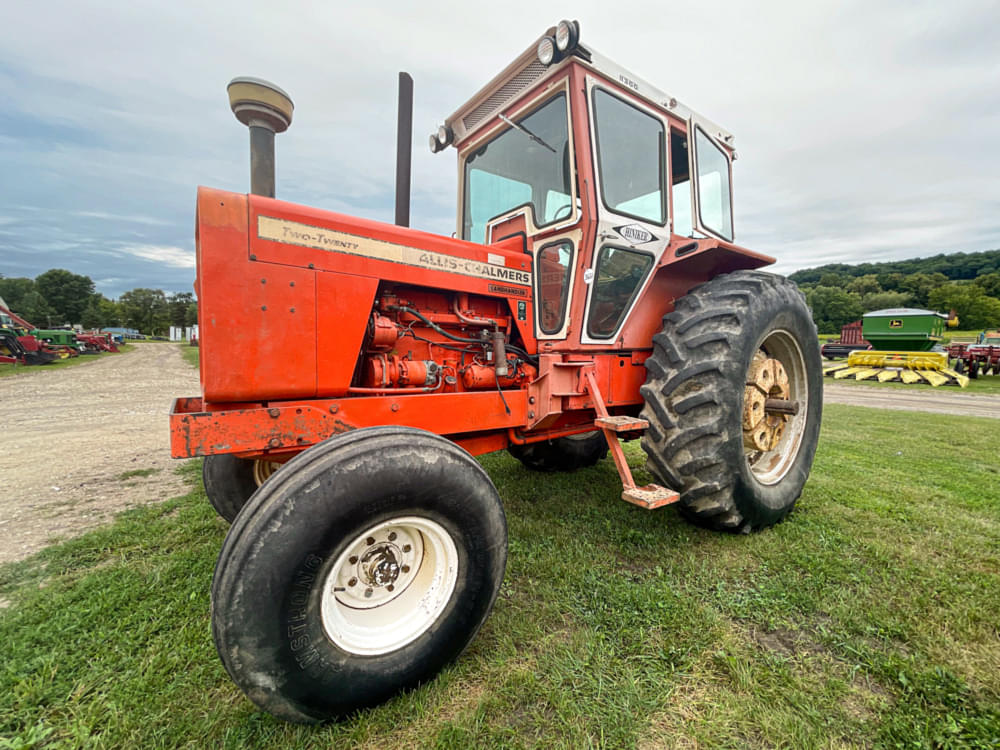
All good things must come to an end at some point. For the D-21, that happened when the 220 rolled out in 1969 (and the 210 a short time later). The styling basically matched the rest of the Hundred Series machines, but with a bigger, cast grill and radiator surround for more front end weight. The 426 under the hood was given a modest 8-horse power bump, but the biggest differences from a mechanical perspective would be found in the driveline. Bigger axles, beefier gears, and a bigger rear end housing meant that the tractor tipped the scales at well over 15,000 pounds – a full 10% more than the outgoing D-21. The 220 was definitely built for business.
There was just one problem.
The 190XT was rated for 93 horse, and the 220 was rated for 136. That left a 42-horsepower gap in their lineup, in the most hotly-contested segment of the market in the early 70s. The 120-horse category was absolutely the hottest segment at the time, and there was plenty of money to be made there!
So, they decided to address that with the 210 in 1970.
The Allis Chalmers 210
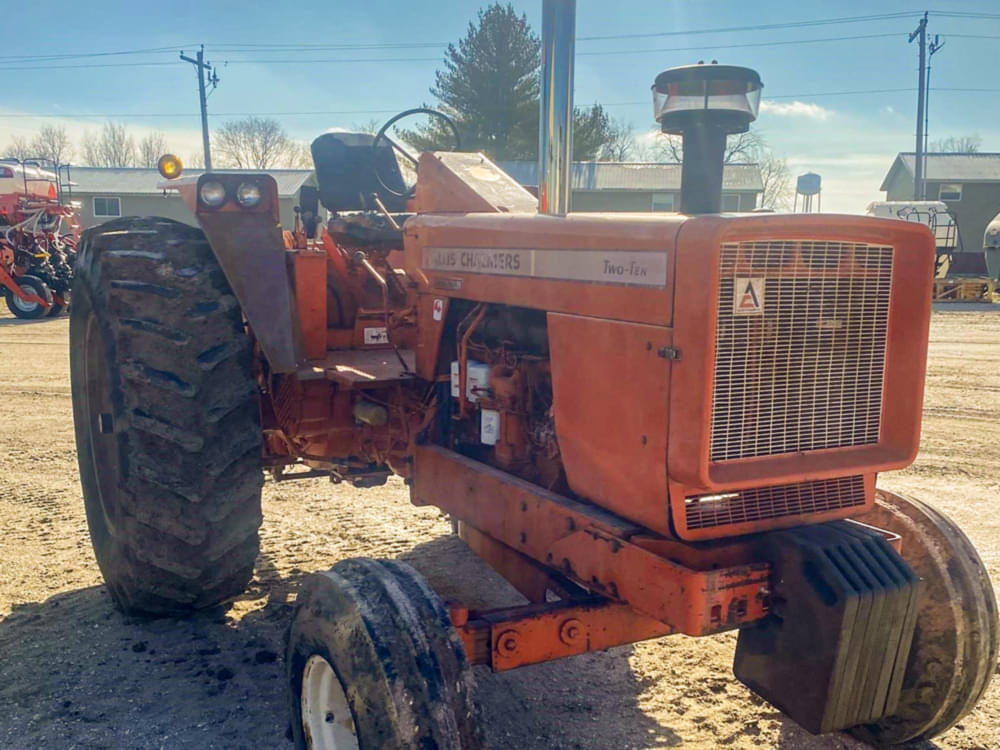
From a mechanical standpoint, the 210 and the 220 were nearly identical. The only major differences were that the 210 used a detuned RoosaMaster fuel pump and a smaller radiator. Everything else was essentially the same. Same 426 cubic inch turbocharged engine, same 8-speed transmission, same 1000RPM PTO. Visually, the tractors are similar, but where the 220 had its own sheet metal, the 210 used modified 190XT sheet metal and front grill. The 210 weighs a little less, too. At the end of the day, aside from some real minor differences (and the aforementioned dialed-back horsepower number – the 210 made 122 on the PTO), they were the same tractor.
So how’d they sell?
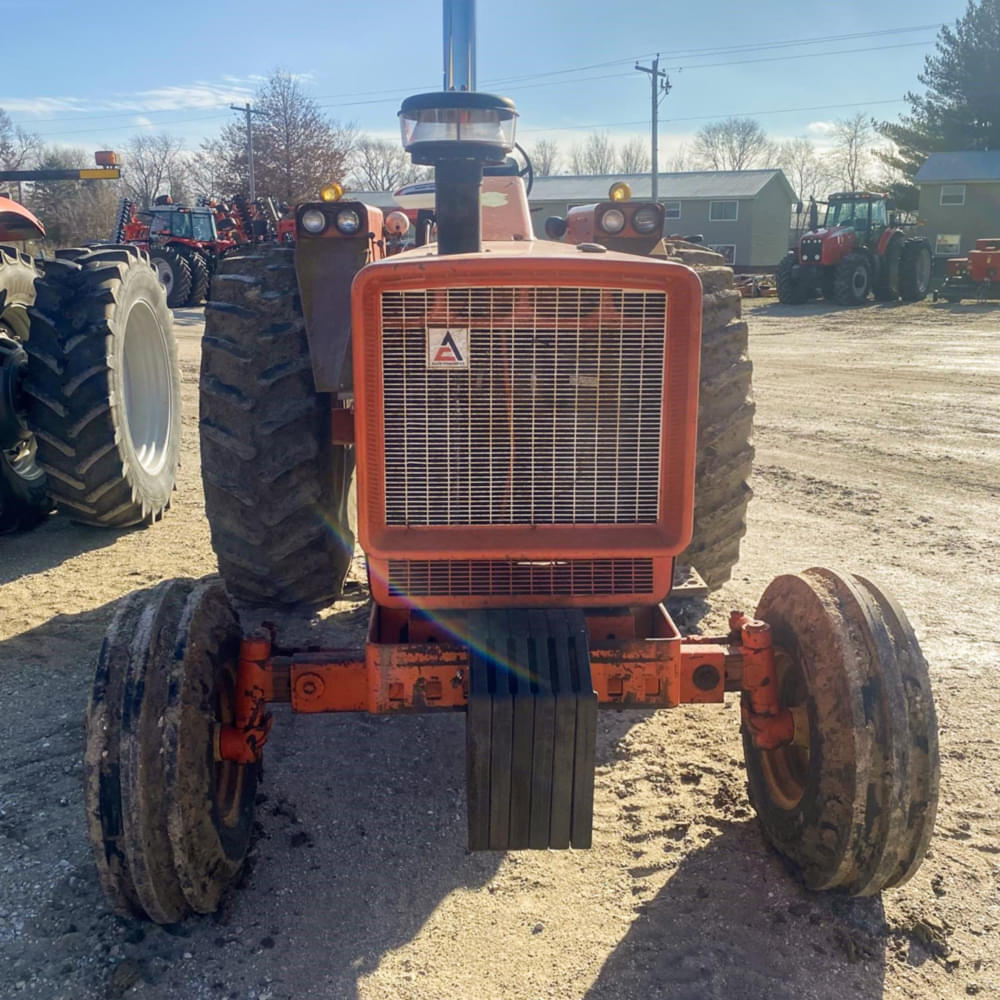
A-C priced the 210 pretty fairly in the market – maybe a little too fairly. That strategy really works best when there’s a little more of a performance barrier that can’t be crossed. When word got out that the 210 and 220 were essentially the same machine, it didn’t take long before farmers were looking a whole lot harder at the 210 knowing that they could swap the fuel pump innerds and get most of that horsepower back! I suspect that over time, the 210 may have cannibalized a few 220 sales.
If I’m being honest, the Landhandler tractors didn’t sell all that well. The Allis Chalmers 210 only moved 1,471 units in three years of production. It was better than the 220, though; counting 100 FWA tractors, total production in four years was 1,865. If we boil the math down to make it real easy, the company sold about 491 of the 210 per year, but only 467 of the 220.
Why didn’t they sell?
Disclaimer: This is only my opinion. I’m just a guy doin’ the Monday morning quarterback thing, and I don’t claim this to be gospel truth.
I think there were a number of reasons that the Landhandler tractors didn’t sell. Here they are in no order of importance.
- They only had a 1000 RPM PTO option. That was the wrong move. The lack of dual PTO limited their marketability to farmers – especially livestock producers who might’ve considered them for the big horse on their farm.
- Keeping the transmission “compact and simple” (their words from a brochure, not mine) made it difficult to work in the field. If you’ve got the tractor under heavy load doing tillage or something, you’re pretty much stuck with one gear. Allis had outfitted tractors with the Power Director transmission since 1964, yet they chose the clunky one for their premier row crop tractor models? That doesn’t make sense to me.
- Considering the competition in the 120-horse range, the Landhandlers were on the spendy side, especially for the feature set. If you were buying a tractor in 1971, you could spend $12K on a 210 with a clunky transmission and single speed PTO, or $9250 on a garden-variety 1066 with a little bit more power, dual PTO, and a Torque Amplifier. For that kind of money, I’m going red all day long.
My 10,000-foot hot take…
On the whole, I feel like the Allis Chalmers 210 was an afterthought that simply missed the mark.
A-C had gone down this road before; the 190XT was a happy accident resulting from a mis-read of the market. Upon realizing the naturally aspirated 190 didn’t have enough snort to compete with the 4020s of the world, it was an eleventh-hour scramble to find horsepower. Ultimately, they bolted a turbo on the existing tractor, called it an XT, and hoped for the best…and it worked.
The 210…not so much.
I think that Allis envisioned that they could somehow convince the market that the 210 was a “Super 190XT” and that it would sell like hotcakes. The problem was that they couldn’t build that tractor because the lighter-weight 190 platform really couldn’t be stretched any further. The 301 was approaching its feasible limits, and turning it up wasn’t really a viable option for the long game. Furthermore, they couldn’t stuff a 426 under the hood without modifications – which would incur more development costs.
So, they opted for the next best solution – use the 220 platform and dial it back. So, while it wasn’t an optimal solution for the 120-horse market, as it lacked features that they didn’t have time to build, it was better than nothing.
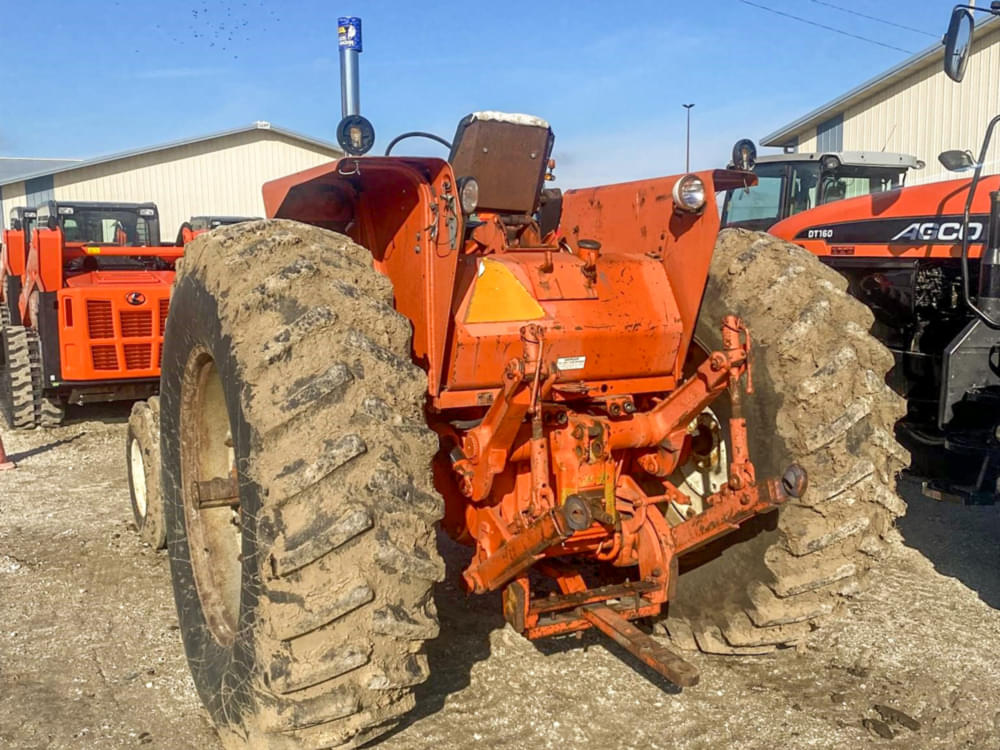
In my opinion, the 210 and 220 weren’t really designed for the typical Allis Chalmers customer. If you look at the numbers, the 190XT outsold every other model in the Hundred Series by 2 to 1 except for the 185 diesel. That should tell you something about the customer-base. Even though farms were growing in the 60s, the core Allis Chalmers customer wasn’t interested in the bigger tractors at that point.
Maybe none of it mattered anyway…
Anyway, I’ve rambled on about this for long enough, because at the end of the day, my opinion and a dollar will get you a hot cup of sub-par coffee. Furthermore, the Landhandler sales may not have mattered all that much to A-C, either; for all I know, the 210 and 220 were like Deere’s 30-series two-cylinders, just placeholders to buy enough time to finish the 7000-Series. The 7030 and 7050 were the first models to roll off the line in West Allis, and they replaced the 210 and 220.
One more time, this is just my opinion. Allis nerds – put away the torches and pitchforks! After you’re done, write me an email and tell me where I went wrong. I’m 100% open to education on this!
So what’s the story on the Allis Chalmers 210 in IL?
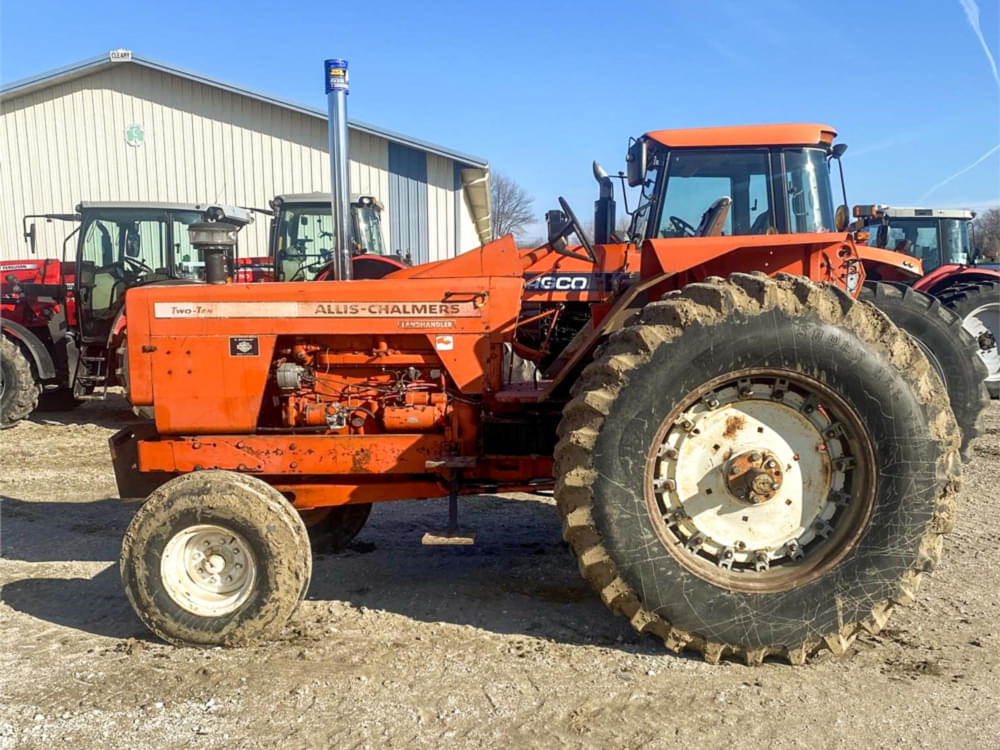
It’s fairly uncommon that we see 210s listed on Tractor Zoom. When this one showed up recently, I made time to call the dealership and learn what I could. After a bit of phone tag, I had a nice conversation with Chad Lambert about it. Here’s what he told me.
As it turns out, this tractor is on consignment for a local retired farmer. As Chad tells it, he’s been a lifelong orange guy and still has a bit of old iron in the barn. At any rate, he bought this 210 from somewhere in Iowa in mid-late 2022. The plan was to use it for acreage maintenance and pushing snow as needed.
Everything was going fine with the tractor right up until it got really cold. Well, this gentleman lives on the top of a hill, and when the wind blows…it really blows. It didn’t take long before he decided that moving snow on an open station Allis Chalmers 210 wasn’t all that great of an idea.
At any rate, Chad ended up selling him a smaller Massey Ferguson with a cab that was much better suited to winter chores. So, since the 210 wasn’t needed any longer, the farmer brought it to Chad to consign it.
The Good/Bad/Ugly
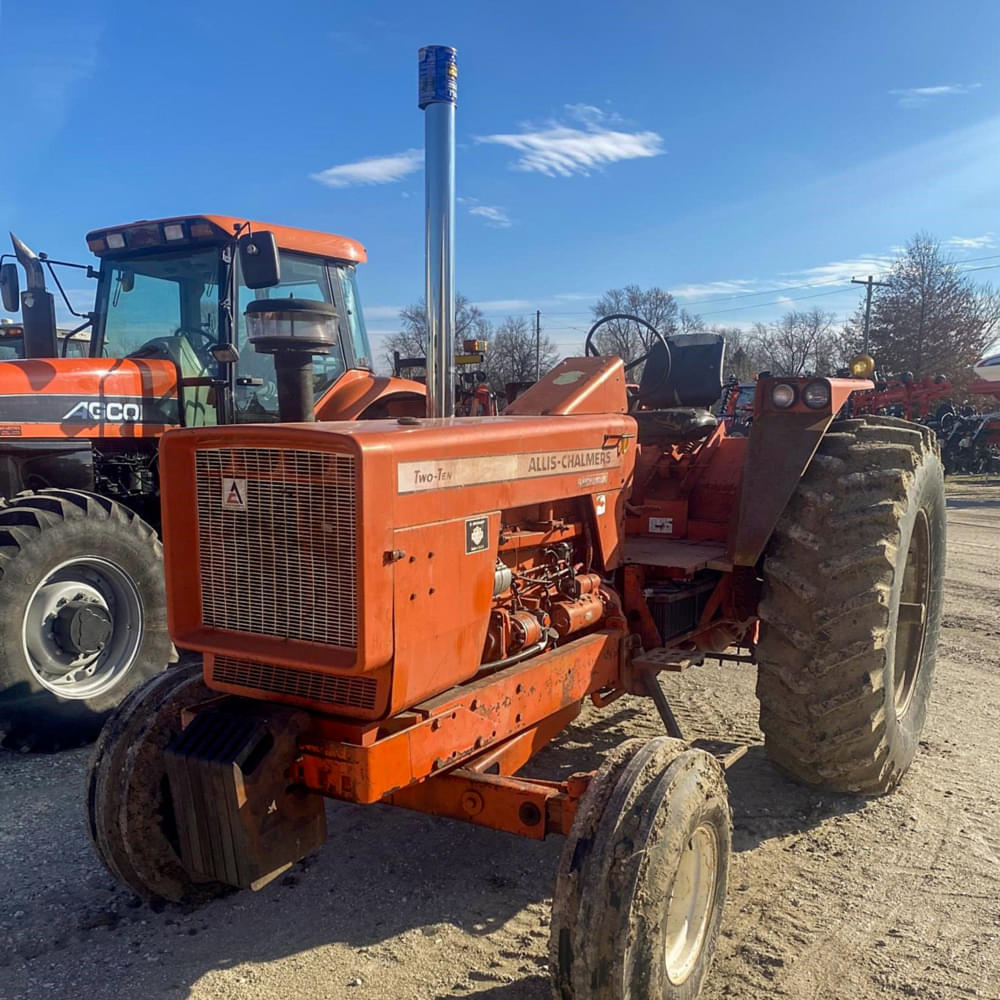
The tractor shows 3923 hours on a working meter, and the guy in Iowa who sold the tractor to the consignor believed that the hours were original. I suppose a quick test drive would probably be enough to tell for yourself.
In any event, Chad told me that it’s a nice driver, and the motor sounds pretty healthy, too. I pressed him a little on the brakes, because they’re a dry mechanical setup, they tend to get pretty weak. He said, “Well, we’ve had it parked on a hill for quite some time and it hasn’t moved yet!” That was good enough for me.
The sheet metal is very straight and it’s got the snazzy fender skirts too, which is nice. I wouldn’t swear to it, but the paint looks pretty original. If it’s a repaint, it was done long ago. It’s wearing a set of 20.8s-38 Firestones on the back, and 10-16 3-ribs in the front. They’re all pretty fresh, too.
So, that all having been said, I feel like this one could be a nice one for a collector who appreciates pretty original things. If it does turn out to be original paint, I sure wouldn’t want to do more than clean it up – and carefully, at that. It’s only original once, y’know?
Wrapping up…
In closing, I’d offer one piece of advice from a recent conversation with Ed Guenther at Guenther Heritage Diesel in West Central Illinois. He said, “If it ain’t broke, don’t fix it. Sometimes the cure can be more painful than the disease, y’know? I’ve had people who bought old tractors like this whether or not I think it’s worth it to tear the motor apart and rebuild it so they can put 40 or 50 hours a year on it running a baler. I usually tell ’em ‘No! So long as it’s not pouring fluids out and it doesn’t take much ether to fire off, just use it!'”
I’m hard-pressed to argue with Ed’s logic here. He’s been working on old iron like this (he specializes in injection pumps) for a long time, and he’s seen a thing or three!
Anyway, if you’re looking for what appears to be an original Allis Chalmers 210, you should probably give Chad a phone call!
Make it a great week, folks!
I do want to thank a few folks for their help in clarifying my thoughts on the 210. I asked a simple question – why didn’t the 210 sell any better than it did – in one of the more active Allis Chalmers groups on Facebook a couple of days ago. If any of you are reading this, thank you for sharing your thoughts and experiences. The perspective was truly helpful. Also, Ed Guenther, Ryan Kelly, Nick McCormick, and Aaron Bobb all deserve shout-outs here, too. They answered a couple of technical/historical questions for me, and also added their perspective to this subject that I hadn’t initially thought about. I appreciate all of you, and your willingness to drop knowledge-bombs on me!

